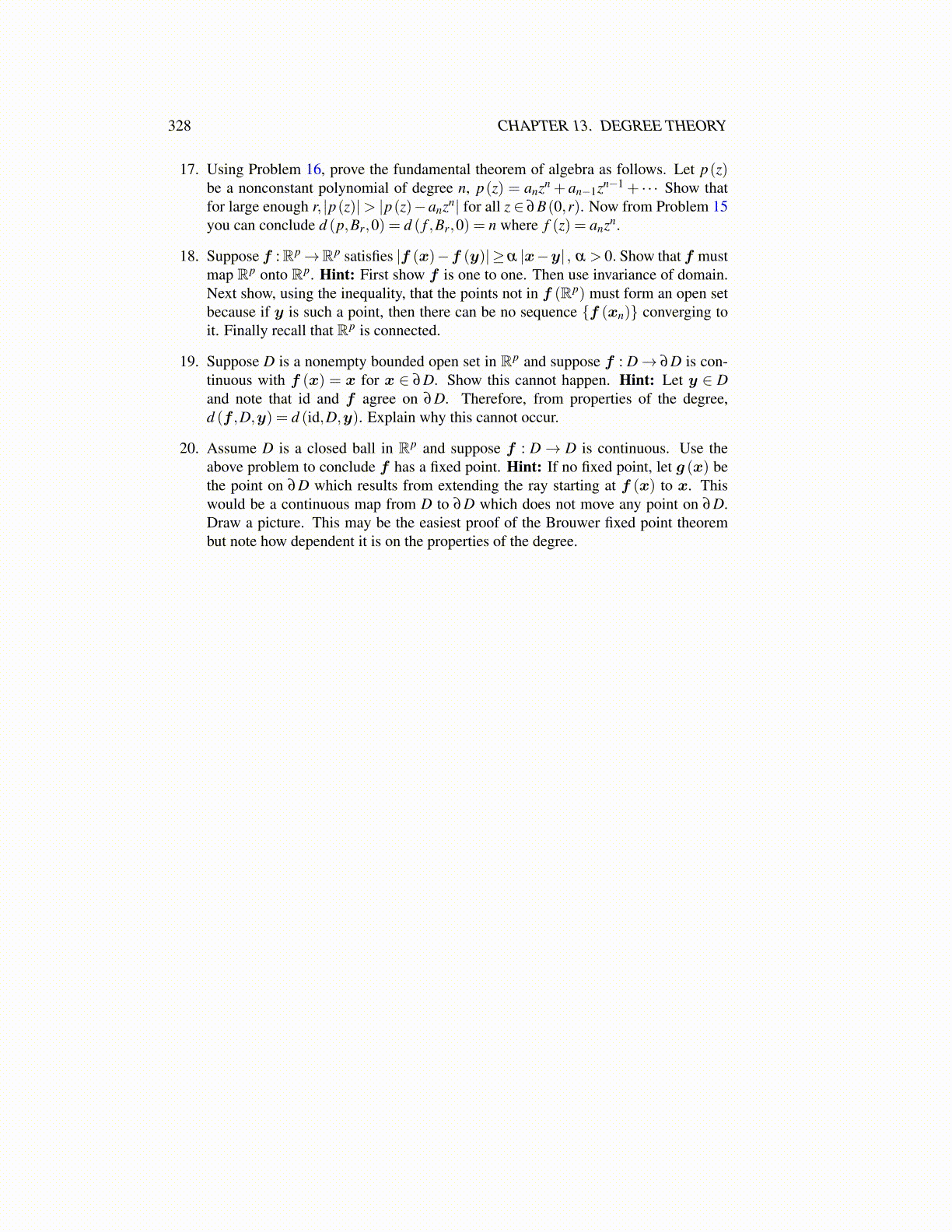
328 CHAPTER 13. DEGREE THEORY
17. Using Problem 16, prove the fundamental theorem of algebra as follows. Let p(z)be a nonconstant polynomial of degree n, p(z) = anzn + an−1zn−1 + · · · Show thatfor large enough r, |p(z)|> |p(z)−anzn| for all z ∈ ∂B(0,r). Now from Problem 15you can conclude d (p,Br,0) = d ( f ,Br,0) = n where f (z) = anzn.
18. Suppose f :Rp→Rp satisfies |f (x)−f (y)| ≥α |x−y| , α > 0. Show that f mustmap Rp onto Rp. Hint: First show f is one to one. Then use invariance of domain.Next show, using the inequality, that the points not in f (Rp) must form an open setbecause if y is such a point, then there can be no sequence {f (xn)} converging toit. Finally recall that Rp is connected.
19. Suppose D is a nonempty bounded open set in Rp and suppose f : D→ ∂D is con-tinuous with f (x) = x for x ∈ ∂D. Show this cannot happen. Hint: Let y ∈ Dand note that id and f agree on ∂D. Therefore, from properties of the degree,d (f ,D,y) = d (id,D,y). Explain why this cannot occur.
20. Assume D is a closed ball in Rp and suppose f : D→ D is continuous. Use theabove problem to conclude f has a fixed point. Hint: If no fixed point, let g (x) bethe point on ∂D which results from extending the ray starting at f (x) to x. Thiswould be a continuous map from D to ∂D which does not move any point on ∂D.Draw a picture. This may be the easiest proof of the Brouwer fixed point theorembut note how dependent it is on the properties of the degree.